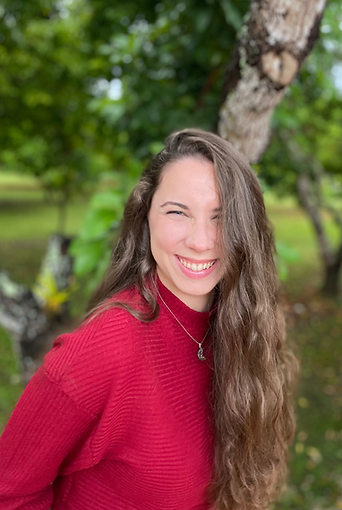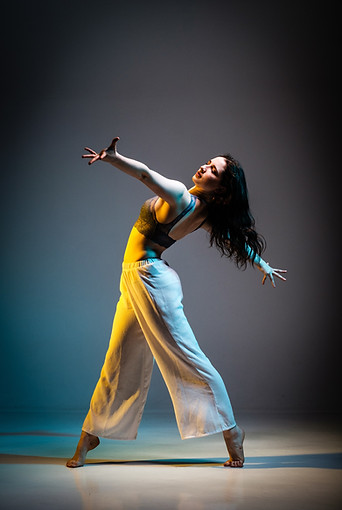Meet Ady
Occupational Therapist
& Founder of Function & Rhythm
Hi, I'm Adalys (Ady), a bilingual board certified and state licensed occupational therapist (OT). I earned a Bachelor of Arts in Psychology and a Master of Science in Occupational Therapy at Florida International University. I have been an OT for over 5 years and work with people, in-person and online, to help them build or rebuild the skills and abilities they need to live their best lives.
I have loved dancing my entire life and find that it is one of the things that brings me the greatest joy. I have found that incorporating music and rhythmic activities into therapy sessions has led to better functional results and participation. Because of this and the growing evidence showing the physical and psychological benefits of music and dance, I decided to create Function & Rhythm.
As a dancer and OT, I am committed to creating a supportive environment where individuals of all ages can increase their well-being and independence through therapeutic dance activities.



What is Occupational Therapy?
Occupations are the activities that we do everyday, including things we want to do, need to do, and are expected to do. These activities include things like dressing, eating, playing, driving, going to school, dancing and many more!
Occupational therapy practitioners are professionals who help people of all ages to live as independently as possible. We work with individuals from all backgrounds and with a wide range of physical and cognitive abilities, including but not limited to:
-
developmental delays
-
learning difficulties
-
sensory processing differences
-
memory problems
-
emotional regulation difficulties
-
motor coordination challenges
-
decreased balance
-
low vision
We use science-backed therapeutic activities, exercises, adaptive equipment, environmental modifications, and other interventions to help our patients reach their goals.
See the attached brochure below from AOTA (American Occupational Therapy Association) for more information.
How is dance incorporated into OT?
Dance is an art form that allows people to express themselves in unique ways that may not be possible using words or other methods of communication. It, along with music, act as universal languages that enhance the mind-body-soul connection and can lead to improvements in motor, cognitive, sensory, and socio-emotional abilities.
Principles of Neurologic Music Therapy (NMT), which is rooted in neuroscience, are incorporated into sessions as part of an evidence-based approach. Through these, we use rhythm and music to activate specific neural pathways that support movement, cognition, and communication.
Dance involves moving the body in a way that matches the rhythm produced by elements of sound. It involves moving through the space available, which means the dancer must have the visual spatial and body awareness to move without bumping into anybody or anything or falling off the stage. The dancer controls the speed, intensity, and complexity of movement based on the rhythm, volume, energy levels, muscle strength, motor control, balance, as well as body awareness (both internal and external). Emotions and mental states can also impact and be impacted by dance. The dancer may use movement to embody and process emotions that may be hard to process otherwise.
Dance-based OT sessions can be very different from each other depending on the client's needs, wants, and abilities.
A young child may use a variety of props and toys to improve their body awareness and sensory processing abilities while imitating or recalling simple dance moves to improve motor planning, coordination, balance, attention, memory, and sequencing. They may also learn about emotions and emotional regulation strategies using various sounds, visual aids, and elements of movement. If part of a group, they may develop greater patience, camaraderie, self-regulation skills (especially if doing competitive activities), and self-esteem.
An adult recovering from a stroke may incorporate elements of dance during therapeutic exercises and activities that work on improving their joint mobility, strength, power, and coordination. They may also use dance to improve their reaction time, attention, as well as their visual spatial and body awareness. They may perform dance moves that improve their balance and reduce their risk of falling. They may work on their memory, sequencing, and praxis by learning a choreography and performing it at a later date.
The possibilities are endless!


.png)
Partnering with The Moss Center
I am so thankful to have the opportunity to partner with The Dennis C. Moss Cultural Arts Center as we pilot a 7-week therapeutic dance program for children with disabilities. This program will include classes for 4-6 and 7-12 year old children. A parent or caregiver should also participate in the classes, as this will ensure that the skills learned during classes can be practiced and strengthened at home.
Classes will be held at The Moss Center, which is located at 10950 SW 211 STREET MIAMI, FL 33189
To learn more about this program, please visit: https://www.mosscenter.org/mc/dance-classes-youth.page
